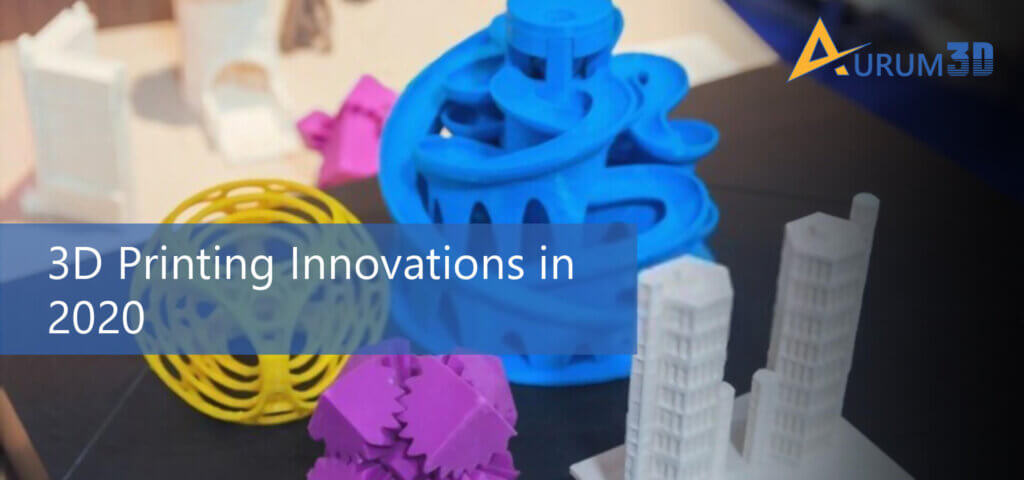In 2020, the disruptions caused by COVID-19 pandemic impacted the growth of various industries negatively. But the disruptions made many industries leverage the potential of innovative technologies like 3D printing. In addition to reducing production and prototyping cost, 3D printing technologies and services help businesses to experiment with new ideas and concepts. That is why; the worldwide market for 3D printing products and services grows consistently.
According to Statista.com,
“The worldwide market for 3D printing products and services is anticipated to exceed 40 billion U.S. dollars by 2024. The industry is expected to grow at a compound annual growth rate of 26.4 percent between 2020 and 2024. “
But the 3D printing technologies have been evolving continuously. The new-generation 3D printers help businesses to generate three-dimensional objects and models using new materials. Likewise, the 3D printing service providers help small enterprises to obtain three-dimensional objects based on out-of-box ideas. That is why; 3D printing innovations in 2020 will drive the growth and transformation of the global 3D printing market in 2021.
Understanding 9 Important 3D Printing Innovations and Trends
Here are some of the most important 3D printing innovations which is going to shape the future of the 3D printing industry.
Emphasis on Solutions instead of Products
In 2020, enterprises from various sectors have leveraged 3D printing technology to resolve the problems and issues created by COVID-19 pandemic. Instead of producing innovative 3D products, companies created new use cases for 3D technology to solve emerging problems. In 2021, the enterprises will adopt the same approach to solve real-world problems. They will continue to leverage 3D printing technology to production cost and time. But many enterprises will use 3D printing technology to solve emerging problems.
Distributed and Democratized Manufacturing
Many industry experts expect 3D printing will be democratized like the internet in near future. Both enterprise and individual users will leverage 3D printing technologies to produce a variety of physical objects and models. Unlike enterprise users, individual users will not 3D-print large automobiles or aircraft. But they will still leverage 3D printing technology to produce specific items on their own. Thus; 3D printing will complement the existing and patented manufacturing process by creating opportunities for innovation and exploration.
Manufacturing Process Customization and Personalization
Many enterprises these days avail of 3D printing services to reduce the time and resources required for delivering customized products. 3D printing services enable people to create innovative products as well as boost the functionality and performance of products by adding innovative features. In 2021, enterprises will involve 3D printing service providers in the manufacturing and customization process to optimize and fine-tune the customization process. They will allow the 3D printing service providers to add value to the process by bringing in their expertise and experience.
3D Printing Using Metals
3D printing technologies help manufacturers to prototype a variety of commercial and industrial products. But the conventional 3D printers often lack the capability to prototype complex commercial products. The shortcomings of conventional 3D printers make metal 3D printing one of the hottest 3D printing trends. Many enterprises already use the laser-based 3D printing technology to create prototypes of products powered metal. Metal 3D printing will not make conventional manufacturing processes obsolete. But the demand for metal 3D printing technology will surge in 2021.
Supply Chain Agility and Integration
Many enterprises have already integrated 3D printing technology into their supply chain to reduce lead time and accelerate production. In 2021, they will expect 3D printing service providers to make supply chains more agile in a number of ways – making adjustments quickly and offering more options. In addition to promoting supply chain agility, many enterprises explore ways to integrate the new supply chains with the existing supply chains seamlessly. The integration will remain one of the major 3D printing innovations in 2021.
Delivery of Ready-to-Integrate Solutions
Many 3D printing service providers still 3D print consumer and industrial products from the digital model or design shared by the client. But the 3D printing innovations have resulted in better and seamless collaboration between software, hardware, and 3D printing service providers. Many 3D printers these days collaborate with clients to deliver high-quality three-dimensional objects that can be integrated with the product immediately. Collaboration and co-creation will remain one of the key 3D printing trends in 2021 and beyond.
Accelerating Pre- and Post-Production
The 3D printing services have to put extra time and resources to streamline the processes in pre and post-production stages. Most enterprises these days use rapid prototyping software to speed up the pre-production process. But they still have to invest extra resources to complete the post-production processing. The leading enterprises deploy robots to speed up and automate the post-production activities. Also, many enterprises use simulation software in the pre-production stage to predict failure. That is why; automation of pre and post-production effort will emerge as an important 3D printing trend in 2021.
Focus on Improving Quality and Safety
The COVID-19 pandemic causes a shortage of a variety of medical products and instruments. Many healthcare companies use advanced 3D printing technology to produce medical product urgently. But they have to keep in place an elaborate quality analysis and checking process to ensure that the medical products are 100% safe. The enterprises will soon revamp the manufacturing workflow to ensure that the 3D products comply with predefined quality standards. They have to give more power to the 3D printing service providers to obtain three-dimensional objects that deliver high-quality and precise healthcare services.
Advancement in Infrastructure Requirements
The enterprises have to upgrade and expand their infrastructure regularly to leverage next-generation 3D printers and 3D printing technologies. In addition to investing in the advanced 3D printers, they have to revamp the additive designing and manufacturing workflow. Also, they must experiment with new and advanced materials to obtain better and innovative 3D-printed objects. The upgraded infrastructure will help enterprises to improve both quality and repeatability by leveraging the 3D printers driven by sensor-based technology.
The worldwide market for 3D printing products and services will grow steadily in 2021. But 3D printing innovations will change 3D printing trends from time to time. The enterprises have to adopt emerging 3D printing trends early and proactively to reduce both production time and cost.

